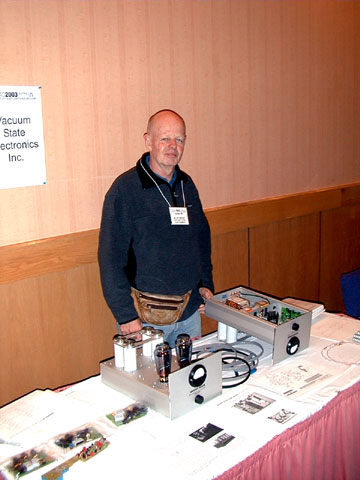


from 2122Hz on up forever? Back in the 70s we called some cutting equipment service departments and found they do roll off this boost with a chicane at around 50kHz (3.18S)so as to keep cutter head warranty claims to a minimum or whatever. But Diego splits the network the way I found sounds best: with the 3180 + 318S rst and the 75 S last 4/ Add the missing Time Constant! The 75S networks in all these designs (except mine) fall at 6 dB/oct forever OK, this may be the RIAA spec but if you think of the record cutting processcan they really boost at 6dB/Oct. Surprisingly, few designers suggest precise caps, and none say to match them super tight channel to channel. I use 10 turn trimmers to start, and replace them with xed Rs once its AOK. Diegos Audio Note paper & oils may sound wonderful, but they dont come in the tolerances needed hereso you may need quite a few to nd those matched pairs c/ Input a square wave via a precise reverse RIAA network and then tweak the relevent resistors to get the best

Buy lots b/ Match these caps ch to ch to better than 0.1%. And trim it you must if you want to get real RIAA accuracy! Your wiring capacitances will always be different to the designers unit, and unless you luck onto some 0.2% Cs and Rs of exactly the specied value, you wont be in the ballparkeven assuming the published values were right in the rst place! As detailed in the TPCB: a/ Aquire RIAA caps as close as possible to the speced values. Now normally a 1dB shift is not easy to hear, but such an error in one of these bands can make a whole system become light and bright (or dark and mysterious) because it moves at least two whole octaves of music bandwidth around! Although not a cure-all, split time constant EQ is the way to go (unless you are a devotee of the KISS principle chasing minimal stage count) but the key advantage has not been emphasised by our authors: split EQ may or may not sound betterbut it is innitely easier to trim to exact RIAA conformance than any all in one topology. 3/ Accurate RIAA! The three time constants in the original RIAA spec create four areas in the audio spectrum: under 50Hz, 50Hz to 500Hz, 500 to 2122Hz, and 2122Hz on up. Theyre also much quieter, and at typically ten times the running current the associated impedances are much lowerwhich all helps the music roll on through. This is a MC cartridge hunting for the extreme low level ambience that makes great live recordings shift time and space so wonderfullyand a WE417A with its 25mA/V (or a 2SK147V with 40mA/V) will have W-A-Y more chance of perceiving and acting upon this lone little electron than a 12AX7 with one twentieth the gm. Hawksford (HFN&RR 8/84): just as the stylus is required to resolve distances compared to the wave length of green light, so the (phono) amplier is required to resolve charge levels in the order of an electron VITAL points in phono stages:1/ No loop feedback! No contestthe sonic advantages of dumping all time dispersive NFB and going realtime doesnt have to be preached to too many SP readers! 2/ Use hi gm tubes at hi currents! Arthur Loesch runs those freaky 417A UHF tubes as RIAA inputs, with 6922s to followa man with soul! And why use such tubes? Consider this from Prof M. And Ive included my latest s/e effort so you can see where Im coming from. Now my intention is not to offend in discussing these designs, but to help make these units even better. Any half decent tube poweramp can sound acceptably musical, and line amps in this age of digital cut more than boostbut phono preamps have to handle very dynamic yet incredibly low signal levelshit them with a wild equalisation curve and all the while (hopefully) maintaining a very tight gain/phase relationship between the channelsso as not to corrupt a stereo picture hard won from a diamond to vinyl mechanical interface! Before Diegos opus, a few passive EQ phono stages/preamps appeared in the literature some balanced, most s/e: the legendary Loesch in SP#3, JCs Siren Song in SP#3 + #4 Joe Curcios Daniel in AA circa 85 Erno Borbelys hybrid in GA 2/97 My balanced RTPs in the TPCB My s/e FVP in the TPCB 2nd edition.
#THE TUBE PREAMP COOKBOOK ALLEN WRIGHT FULL#
Secrets of the phono stageWhen itnallyarrivedSP #14 was a blast! Three New York power amps and an Italian phono stage with full details of how, when and why which in a world overrun with micro poweramps masquerading as preamps takes big time courageBravo Diego! I put my ass on the line with the heavily phono biased TubePreamp CookBook so I get very interested in seeing what others come up with in this trickiest of audio areas.


 0 kommentar(er)
0 kommentar(er)
